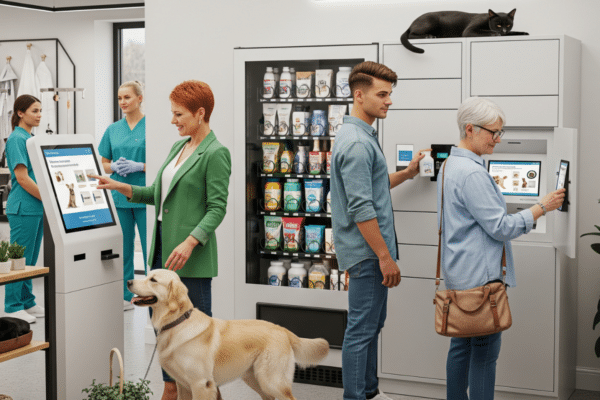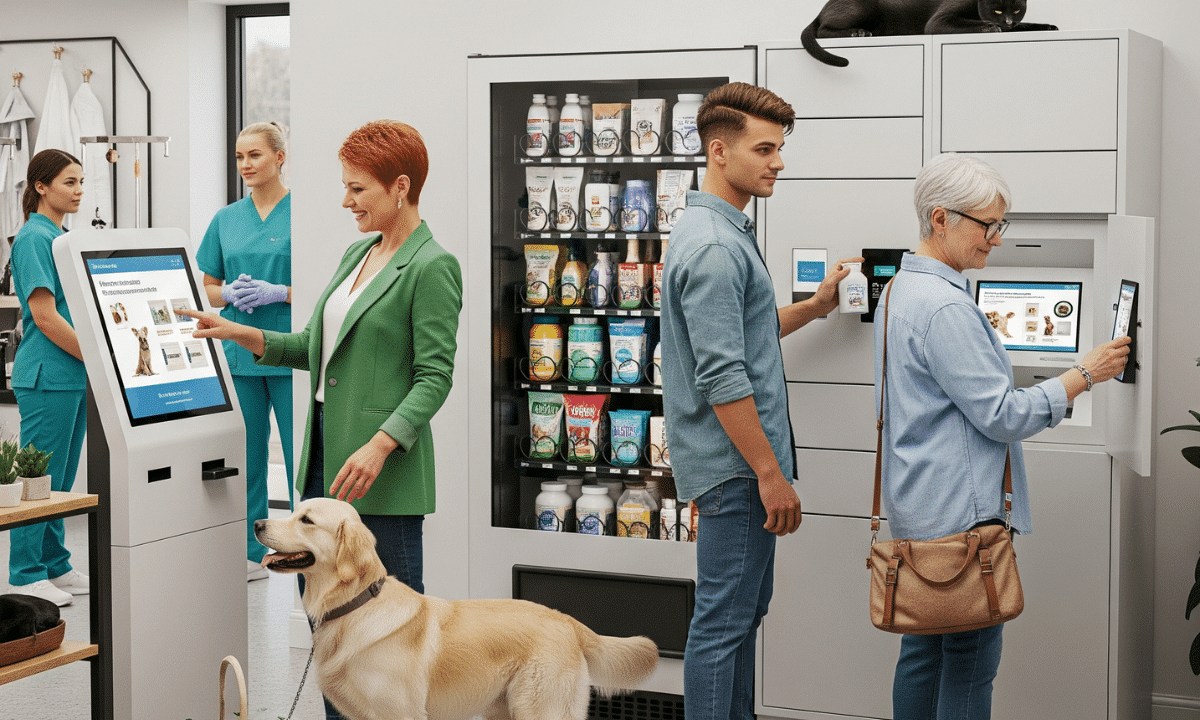
The Power of Customer Experience Management
Customer experience management (CXM) is the practice of designing and reacting to customer interactions to meet or exceed customer expectations in ways that improve customer engagement, customer retention, and advocacy. Let’s explore the importance of CXM and how you can excel.
Understanding Customer Experience Management
What is Customer Experience Management?
CXM encompasses the strategies and practices employed by companies to oversee the customer journey across all touch points, with the aim of meeting or exceeding customer expectations. The goal is to optimize interactions at every customer touch point, fostering positive brand perceptions, satisfaction, and loyalty. This involves developing a deep understanding of customer behaviors, expectations, preferences, and pain points and using this insight to impact product development, marketing, sales, and the overall customer experience strategy.
Successful CXM necessitates cross-functional collaboration, ensuring a seamless and consistent customer experience. With the proliferation of digital channels and customer data, companies now possess capabilities to engage customers through personalized experiences and refine strategies based on key metrics such as Net Promoter Score and customer satisfaction ratings. CX leaders strive to cultivate positive relationships that result in increased customer lifetime value.
Importance of Customer Experience Management
Customer experience management has become a key priority for companies in today’s highly competitive, customer-centric business landscape. Providing a positive, seamless customer journey can lead to increased satisfaction, loyalty, referrals, and lifetime value. On the other hand, negative experiences at any stage of the customer lifecycle can quickly erode trust and result in defection to competitors. Since customers have so many options and switching costs are low, especially online, brands cannot afford to disappoint them.
Companies that excel at customer experience management are able to consistently meet rising customer expectations around convenience, personalization, responsiveness, and empathy. They use customer feedback and behavioral data to identify pain points and optimize processes to remove friction or delight customers. With the proliferation of reviews and social media, customer experiences also have an impact on public reputation. By strategically managing the customer experience through coordinated efforts across sales, marketing, service, and product teams, companies can attract new customers and increase customer retention in sustainable ways.
Key Elements of Customer Experience Management
An effective CXM strategy requires coordination across departments to map the end-to-end customer journey and identify key touchpoints. This allows cx teams and organizations to gain insight, set clear goals and metrics, and implement processes to continually improve customer experience (CX).
Key elements of experience management include voice-of-the-customer programs, customer feedback channels, journey mapping, customer data analysis, experience data, closed-loop feedback systems, and employee engagement. Technology such as CRM, marketing automation, and analytics tools also enable more powerful CX platforms.
Other important components are developing a customer-focused culture, aligning performance metrics, continuously optimizing interactions, and providing personalized omnichannel engagement. Dedicated CX leaders and coordinated CX teams help drive these efforts.
Building an Effective Customer Experience Management Strategy
An effective customer experience management strategy requires a concerted, customer-centric effort across the organization to optimize every customer interaction. Companies should conduct customer research through surveys, interviews, journey mapping exercises, and data analysis to gain insight into customer pain points, needs, and emotions at different stages of the customer life cycle. These consumer insights allow businesses to shape their CX vision and principles that will guide decisions, as well as map the end-to-end customer journey to identify key touch points to address.
With the customer journey and priorities mapped, companies can then set clear, quantifiable CX goals and key performance indicators tied to metrics like net promoter score, customer satisfaction, and customer retention rates to track progress. The primary focus of CX teams should be on major pain points frustrating customers and creating initiatives that are likely to drive KPI improvements. Fundamentally, CX efforts require fostering a culture of customer centricity, where CX is an organization-wide priority with leadership buy-in and team member engagement.
Personalization in Customer Experience Management
Personalization has become a crucial strategy for companies looking to improve the customer experience. By tailoring interactions to each customer’s needs, preferences, and behaviors, brands can make their customers feel valued as individuals.
One powerful personalization method is using predictive analytics and customer data to guide cx team moves. For example, an e-commerce site can track a customer’s browsing history and purchases to recommend products they are likely to be interested in. Dynamic content that changes based on factors like the customer’s location or past purchases can also enhance relevance.
Brands have many options to manage customer experiences and craft personalized ones across channels. This includes personalized subject lines and messaging in email campaigns, customization options for products/services, and loyalty programs with rewards tailored to the individual. Chatbots that “remember” customer details like product preferences or recognize returning site visitors also contribute to a better customer experience.
The key is to use all the customer data at your disposal to segment and tailor interactions. By tracking behaviors across the web, social listening, mobile, in-store, and other channels, brands can gain a 360-degree perspective of individual customers. This allows brands to deliver consistent, personalized experiences based on each customer’s journey.
Use of Digital Technology for Enhanced Customer Experience
Advancements in digital technology and customer experience tools are providing companies with new ways to enhance the customer journey. Artificial intelligence-powered chatbots now allow for faster and more convenient customer service interactions. Automation tools help streamline critical business processes like order fulfillment to improve efficiency. Customer relationship management systems give companies the ability to manage all customer data and interactions in one CX platform.
Digital marketing has also been transformed by new customer experience tools. Marketing automation platforms enable personalized and omni-channel campaigns across email, social media, websites, and more. Cloud-based CX software captures customer feedback and provides insights to optimize the customer journey. Customer data platforms build unified profiles by aggregating data from all sources to better understand customers.
On the product side, the Internet of Things (IoT) allows for connected devices that facilitate proactive service and support capabilities. Augmented reality (AR) and virtual reality (VR) can provide engaging, interactive shopping experiences. Experience management platforms centralize control of content across all digital touch points.
By leveraging these digital innovations, companies can gain a competitive advantage through an optimized CX platform. Customers today expect seamless omnichannel experiences, highly personalized engagement, and real-time service. The smart implementation of AI, automation, cloud computing, and other digital technologies enables organizations to meet and exceed rising CX expectations, thereby improving customer experiences, winning brand loyalty, and reducing customer churn rates.
Role of Customer Feedback and Experience Analytics
Continuously gathering customer feedback provides the insights needed to improve the customer experience. There are several important practices for gathering and analyzing customer feedback.
First, conducting surveys like Customer Satisfaction (CSAT) and Net Promoter Score (NPS) on a regular basis provides quantitative data on satisfaction levels. Monitoring social media conversations (social listening) also provides a good gauge of customer sentiment. Analyzing customer journeys end-to-end helps uncover pain points and bright spots across touchpoints. Reviewing customer service interactions helps identify recurring issues driving dissatisfaction.
Second, gather feedback at multiple touchpoints. This can be done through short surveys or pulse checks. Leveraging feedback management platforms to systematically analyze and act on insights is key. These platforms should integrate with workflows across departments to enable quick action.
Third, establishing closed-loop processes to follow up on feedback demonstrates commitment and builds loyalty. Reporting regularly on feedback metrics also helps demonstrate tangible CX improvement across the organization. Continuously gathering and analyzing customer feedback and acting on insights through cross-functional collaboration is crucial for improving CX and business results.
The Impact of Customer Experience Management on Business Success
How Customer Experience Drives Business Growth
Delivering excellent customer experience can be a competitive differentiator that fuels sustainable business growth. By understanding customer perspectives, progressive companies identify areas of frustration and opportunities to remove pain points and created personalized experiences across the entire customer journey. Refining touchpoints around convenience, communication, support, and personalization shapes positive brand perceptions and causes customers to feel appreciated. These experience management improvements cultivate higher rates of satisfaction and loyalty, deepening the connection a customer has with the brand.
Consequences of Poor Customer Experience Management
Inadequate experience management can spell disaster for a company in today’s highly competitive, customer-centric business environment. When customers have frustrating, disjointing journeys full of pain points across channels, dissatisfaction breeds quickly. Negative perceptions spread rapidly across social platforms via complaints and bad reviews. These customers readily defect to alternate brands that treat them better, increasing customer churn and resulting in sinking revenue.
Poor customer experiences often stem from inside-out thinking, product-centric cultures, and a lack of insight into changing consumer expectations. As such issues compound over time, customers who feel unimportant and undervalued leave for competitors at alarming rates. A damaged brand reputation and eroded consumer trust in the company make winning back customers an uphill battle. Without the customer retention and loyalty that come from delivering best-in-class experiences, brands struggle to maintain relevance in the market.
Elevate Your Relationship With Your Customers
Delivering excellent end-to-end experiences across the customer life cycle is imperative for companies seeking sustainable success. Though optimizing customer interactions requires cross-functional vision and commitment, the rewards of loyal, satisfied customers and word-of-mouth referrals far outweigh the investments. By truly listening to the voice of each customer, proactively removing pain points, and continually refining journeys across channels, companies can elevate the customer relationship from transactional to emotional and memorable.








